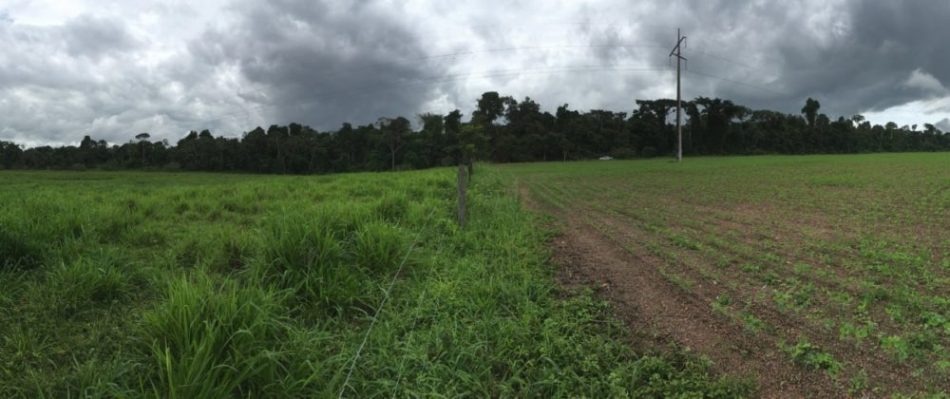May 27 2019
Presently, one of the greatest threats to tropical biodiversity conservation is the clearing and subsequent instability of Amazonian forests.
 Researchers found that invertebrates such as earthworms, ants, and termites were more vulnerable to the displacement of forests with pastures than by crops, while microbes showed the opposite pattern. (Image credit: André L.C. Franco/CSU)
Researchers found that invertebrates such as earthworms, ants, and termites were more vulnerable to the displacement of forests with pastures than by crops, while microbes showed the opposite pattern. (Image credit: André L.C. Franco/CSU)
The destructive effects of deforestation to plants and animal species residing above the ground are well documented; however, researchers and others should better understand how soil communities respond to this deforestation to develop interventions that guard biodiversity and the ecosystem. However, that information has been missing.
A research team headed by André Franco, a research scientist in the Department of Biology at Colorado State University, performed a meta-analysis of almost 300 studies of soil biodiversity in Amazonian forests and locations in different phases of deforestation and land use.
The new research, titled “Amazonian deforestation and soil biodiversity,” has been reported in the June issue of Conservation Biology and is co-authored by CSU Distinguished Professor Diana Wall, Bruno Sobral, professor in the Department of Microbiology, Immunology and Pathology at CSU, and Artur Silva, professor at the Universidade Federal do Pará in Belém, Brazil. It also features on the cover of the journal.
On the whole, the scientists identified that the richness, biomass, abundance, and diversity of soil fauna and microbes were all decreased after deforestation. Soil fauna or animals that were investigated include millipedes, earthworms, nematodes, dung beetles, mites, scorpions, and spiders.
Franco, who is a native of Brazil, stated that this is the first time that all of the available scientific data associated with soil biodiversity in Amazonian forests have been put together.
The team of scientists also discovered that the way the land is used after the deforestation is important to soil biodiversity. Invertebrate species like ants, termites, and earthworms—which are known as soil engineers—were more susceptible to the displacement of forests with meadows when compared to crops, while microbes revealed the contradictory pattern.
Franco reported that the highest biodiversity losses were identified along the side of the Amazon with the highest mean annual rainfall and in regions where the soil was extremely acidic.
That means these areas should be higher priorities for conservation efforts.
André Franco, Research Scientist, Department of Biology, Colorado State University
Researchers also revealed gaps in the existing research.
“Very few studies looked at the impact of disturbances like wildfires and selective logging on these forests,” stated Franco. “Yet logging is an official management strategy in the Amazon forest.”
Furthermore, the group found that the data was lacking for seven out of the nine countries that are covered by the Amazon biome, comprising parts of Peru, Bolivia, Venezuela, Ecuador, Suriname, Guyana, and French Guiana.
Sobral remarked that biodiversity is a hot theme and recently became significant with the issue of a report from the United Nations, which revealed that nature is deteriorating internationally at unparalleled rates. However, a majority of the scientific information in the world about biodiversity is related to mammals and birds, he stated.
The research group is continuing this study in the Amazon, working with farmers’ associations and two research institutes in Brazil to gather and examine soil samples with the objective of investigating the effects of this loss of biodiversity. Zaid Abdo, a bioinformatics expert and associate professor in the Department of Microbiology, Immunology and Pathology, has become a member of the CSU-based research group.
Sobral stated it is very essential that the researchers work with local farmers and others who are affected by the deforestation.
We’re very focused on making sure the research isn’t disconnected from local communities’ needs and aspirations. Our work is guided by what the farmers want to know and how scientific knowledge could shape their future sustainable development.
Bruno Sobral, Professor, Department of Microbiology, Immunology and Pathology, CSU
Wall is also the director of the School of Global Environmental Sustainability at CSU, which offered travel funds for the research group.